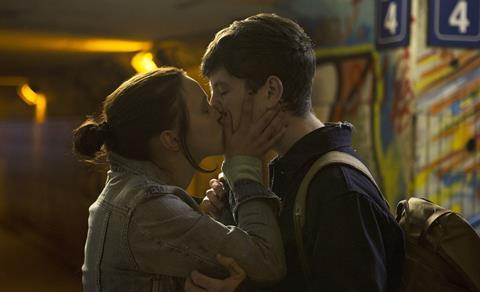Birmingham-set film follows a second-generation immigrant who embarks on a road trip to find a legendary French painter.

Light Thereafter is the latest project from director and visual artists Konstantin Bojanov, who’s previous feature was Avé in 2011.
The film is from F&ME (UK) in collaboration with Multfilm and Left Field Ventures, with Latido Films handling sales. We spoke to the director ahead of its screening at Rotterdam.
How did you get into filmmaking?
I must have been sixteen or seventeen, an undergraduate art student in Sofia, when I first attempted to write a script. I don’t remember what it was about, all I remember is that I badly wanting to make films but had no idea how to begin. Later, as a student at the Royal College of Art in London, I spent most of my time at the photography and film departments. During that time, I continued to write scripts for short films - very naive ones, I still remember some of them. Simultaneously I began making single and multi-screen video pieces, which were subsequently exhibited in galleries and museums. The first film I made for the big screen was in 2001. It was a short documentary called Lemon is Lemon.
What was your inspiration for making Light Thereafter?
One sleepless night I was listening to This American Life, a radio show I am addicted to. The featured story sent me back to my early teens, when, fed up with how “phony” everything and everyone was, I decided to quit art school and move to a remote village, where a painter I idealized at the time had lived decades earlier. Somehow I imagined that by living there, through osmosis, I would absorb some of his greatness. The memory of this episode gave me the idea to write a story about a Holden Caulfield-like character who sets to look for his idol, a painter living in seclusion, not unlike J. D. Salinger.
Was this projects developed through any labs (for example Torino Film Lab)?
The project was developed independently of development labs. It took various twists turns - some right, some wrong - but ultimately in the editing stage I return to my original idea - a film that reads as fragmented memory and not as a linear story.
What was the biggest challenge when working on the film?
With everything I do, the biggest challenge is my own limits, of which I am fully aware, and constantly confront in my painfully impossible quest for perfection. Apart from that, the production resembled that of Apocalypse Now on a miniature scale. If there was something that could have gone wrong, it went wrong.
How do you think the film diverts from your previous work?
Light Thereafter is in many ways a continuation of existential themes prevalent in my previous films Invisible and Avé.
What are you working on next?
I have one project in financing called Your Eyes - a tragic love story between two teen prostitutes in Southern India; and another one called Nights and Day - the story of a mother and her gay son, who relocate from the countryside of Bulgaria to Sofia, which is in script development.






![The Brightest SunScreen[Courtesy HKIFF]](https://d1nslcd7m2225b.cloudfront.net/Pictures/274x183/3/5/0/1448350_thebrightestsunscreencourtesyhkiff_312678.jpg)


















No comments yet